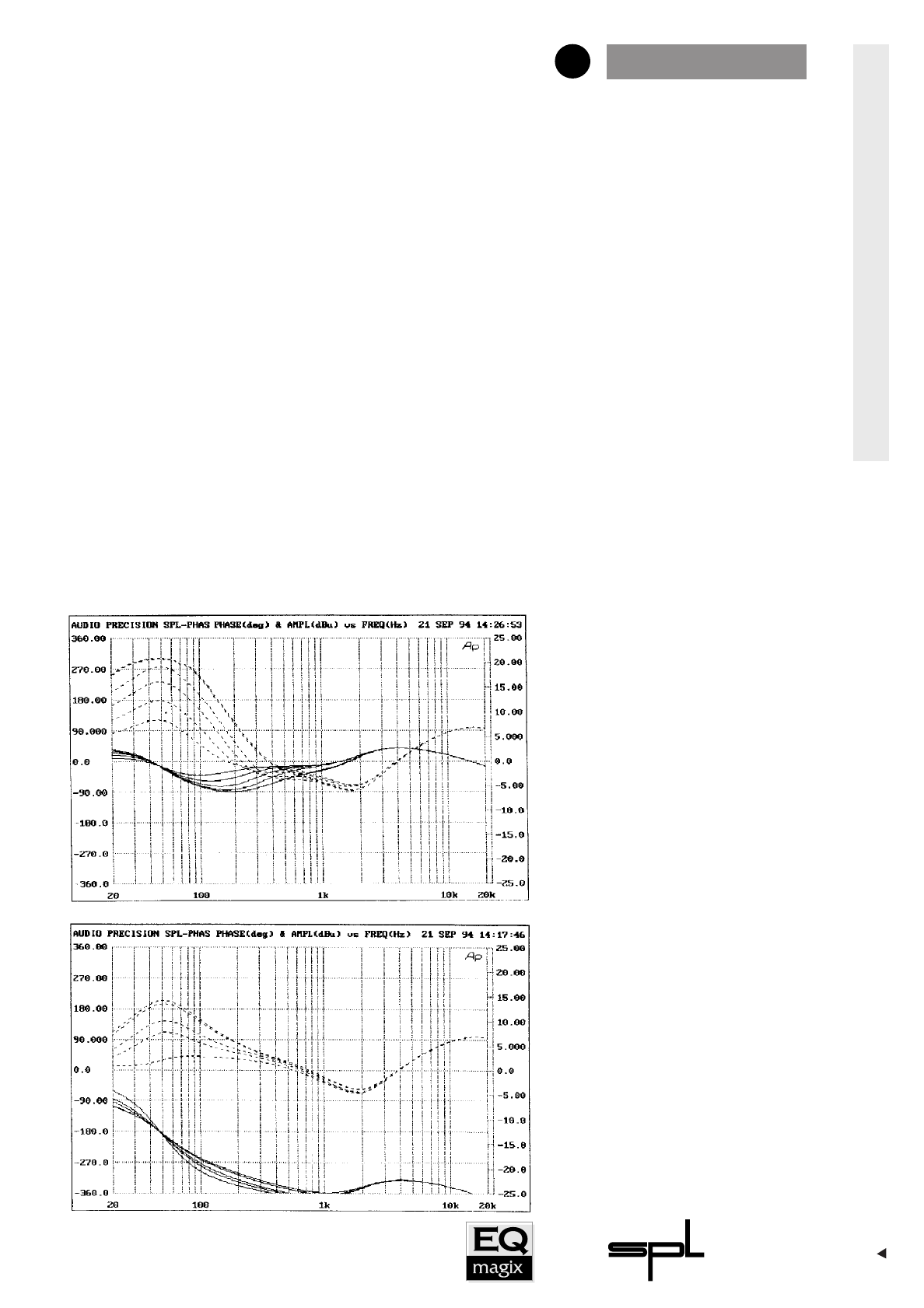
23
The BASS control is responsible for the »colour« of the bass sound your
signal is to have. If you move the B
ASS control to the right, you get a drier,
percussive bass sound, known as T
IGHT. As a result of this, on the right-
hand side of the scaling points, there are squares which increase in size, in
line with increased intensity. They symbolize the contoured »T
IGHT« bass
sound.
If the B
ASS control is moved from the centre position (0) to the left, the
bass sound becomes very deep, soft and warm. This sound is known as
S
OFT. This is symbolized with round scaling points which also increase in
size as the intensity increases.
The further the B
ASS control is shifted to the right or left of the centre
position, the more intensive the bass sound in question. However, P
ROCESS
must be positioned to the right of the MIN setting for the bass to be audible.
You can always hear the original (dry) bass if the B
ASS control is in a
centre position.
The P
ROCESS control determines the processing ratio between the set
bass sound colour and the original signal. This results in varying bass sound
structures: if you combine high bass amplification on the B
ASS control with
a lower P
ROCESS value, you get a different bass structure than with a lower
bass amplification combined with a higher P
ROCESS value. Choosing the
best solution is a matter of personal taste and also depends on the type of
original signal involved.
Bass
16
The VITALIZER's control elements
Fig. 6:
The dotted line shows frequency
responses for a soft Bass (S
OFT
)at
maximumP
ROCESS
and a M
ID
-H
I
T
UNE
of 3.5 kHz.
The solid line shows the phase
response, which always drifts only
a few degrees if the amplitude is
increased.
Fig. 7:
The dotted line shows frequency
responses for a hard Bass(T
IGHT
)
at maximum P
ROCESS
and a M
ID
-
H
I
T
UNE
of 3.5 kHz.
The solid line shows the phase
response whichhas a phase rela-
tion of -180° at 50 Hz, but other-
wise also drifts only by a few
degrees at increasing amplitudes.


















